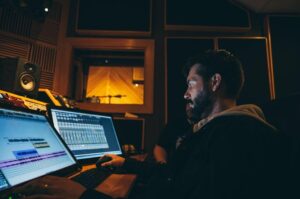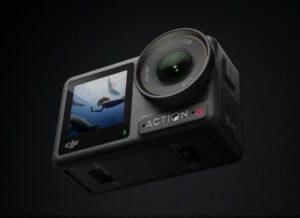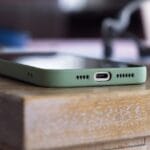
Introduction
iPhone photography has elevated mobile photography to new heights, with quality that competes with professional cameras. Whether you’re a novice or experienced shutterbug, this guide will empower you to take captivating photos effortlessly using your iPhone. We’ll explore how to fully utilize your iPhone camera’s features, master the art of iPhone photography, use the timer effectively, and create unique visuals with intriguing filters. Our detailed walkthroughs, tips, and techniques are designed to enhance your skill set, so you can capture memories and moments in stunning detail. Let’s unlock your potential and begin our journey in mastering iPhone photography!
Understanding iPhone Camera Features
Apple consistently impresses us with the camera capabilities of its iPhones, paving new paths in mobile photography. To truly master iPhone photography, it’s essential to understand its various features.
Megapixels and Low-light Performance
The iPhone camera comes with high megapixels capacity. For instance, the iPhone 12 Pro boasts a 12-megapixel camera that allows for ultra-clear, high-resolution photos, even in low-light situations. With new sensor technologies, nighttime photography has become more accessible than ever.
“The more pixels, the better the image quality.” -[Luke Skywalker, iPhone Photography Expert]
Wide Angle and Telephoto Lenses
The iPhone cameras often have multiple lenses that aid in capturing wide-angle shots, telephoto images and enhanced depth of field. With these, you can capture a larger scene without moving back, create blurred backgrounds for portraits, or zoom into distant objects without losing much detail.
HDR and Smart HDR
High Dynamic Range (HDR) and Smart HDR are game-changing iPhone camera features, ensuring the correct exposure in various parts of a photo. Smart HDR goes further by taking multiple shots at different exposures and merging them for the best result.
Portrait Mode and Depth Control
These features allow you to take stunning professional-quality portraits by creating blurred backgrounds and focusing on the subject. Depth control lets you change the level of blur even after capturing the photo.
Live Photos and Burst Mode
Live Photos capture 1.5 seconds of movement and sound before and after the still photo, while Burst Mode helps you take numerous photos in quick succession, ensuring you don’t miss the perfect shot.
In summary, understanding these complex but accessible features will drastically improve your iPhone Photography. Experiment with each feature, familiarize yourself with their benefits, and watch your photo game rise to new levels.
Mastering the Art of iPhone Photography
Taking the Best Pictures
iPhone photography is about more than just pointing and shooting; it’s a form of art. In this section, we will go over some tips to help you master this art.
- Focus and Exposure Lock: This feature allows you to lock the focus and exposure. It can be activated by pressing and holding the subject until you see the “AE/AF Lock” sign.
- Use Gridlines: The rule of thirds is a basic principle in photography. Turn on the gridlines feature in your iPhone settings to split your screen into nine equal rectangles. Try to position your subject on the intersections of these lines.
- Experiment with Angles: Don’t just take photos from eye level. Experiment with shooting from high, low, and various other angles to get more interesting photos.
“The best thing about a picture is that it never changes, even when the people in it do.” – Andy Warhol
Using Timer Effectively
Using a timer is essential for steady photos, group pictures, or simply when you want to be in the photo as well. Here’s how you can make use of it effectively:
- Long-press the shutter: Long-pressing the shutter button in the camera app enables the burst mode. Use this when you want to capture quick motion.
- Volume control button: Did you know you could use the volume up button as a shutter? A nifty tip when you want to take self-portraits.
Applying Filters
Filters are a great way to add an artistic touch to your photos. Here’s a quick guide on how to apply them:
- Live filters: When you’re in the Camera App, you’ll see three overlapping circles at the top. Tap on these to open your live photo filters.
- After the fact: You can apply or change filters after taking a photo via the Photos App. Simply select the photo you want to edit, tap on “edit”, and then the filter icon.
iPhone photography goes beyond simply taking pictures. It gives you an opportunity to tell a story, capture a moment, or express your creativity.
Effective Use of Timer in iPhone Photography
The iPhone camera timer is often overlooked but it’s a powerful tool that can dramatically enhance your photography. Whether it’s taking selfies without the hassle of holding the phone or capturing a group shot where everyone looks good, the timer can be your best friend.
Setting the Timer
You can find the timer icon at the top of your iPhone’s camera app. There are two options available, 3 seconds and 10 seconds. According to experienced iPhone photographers, if you’re shooting an object or a scene, a 3-second timer is ideal. For more complex subjects, or when you’re part of the picture, 10-seconds works best.
Tripod and the Timer
Do not overlook the synergy between the timer and a tripod. Using a tripod allows you to frame your scene and then get into the shot yourself. It minimizes camera shake which is particularly crucial in low light photography where a small movement can ruin the photo.
Quote from Jordan Yeoh, a professional iPhone photographer: “Utilizing the timer function on the iPhone can help to take photos that are clear, professionally-framed, and without blur. It’s a game-changer, especially when combined with a sturdy tripod.”
Capture Delayed Actions
One less obvious use of the timer is to capture actions with a slight delay. For instance, toss an object in the air and get an amazing action shot as it falls.
| Tips for Effective Use of iPhone Timer |
|---|
| Understand 3-sec and 10-sec differences |
| Use a tripod for a stable shot |
| Use to capture delayed actions |
Remember, the timer is not just for group selfies. Be creative and experiment with it to get the best out of your iPhone photography. With a little practice, you’ll be mastering this feature in no time.
Exploring the World of iPhone Filters
iPhone has some of the most versatile photo editing tools built right into its Photos app. They provide a fast and convenient way to enhance your images with an artistic flair. Among these tools is a selection of photographs filters, each adding a distinct visual style to your pictures.
Understanding iPhone Filters
iPhone filters affect the overall mood of your pictures. They may add warmth, increase contrast, modify saturation, or change color tint. They can essentially redefine the ‘atmosphere’ of your images. Therefore, it’s important that you choose the appropriate filter that signifies the emotion you want to convey in your image. Now, let’s delve deeper into what each filter can offer.
- Vivid and Vivid Warm: Ideal for adding saturation and contrast, making the colors in your photo pop.
- Dramatic and Dramatic Warm: Perfect for adding depth and strong contrast to your shots.
- Mono, Silvertone, and Noir: Provide a range of black and white effects for a classic, timeless look.
Applying Filters
Applying a filter to your iPhone photos is an easy task:
- Open the ‘Photos’ app and select the image you want to modify.
- Tap ‘Edit’ at the top-right corner.
- Select the filters icon at the bottom which is represented by three circles, and scroll through the available options.
- Once you’ve found your desired filter, you may adjust its intensity using the slider.
- After you’re happy with your adjusted image, tap ’Done” to save your edited photo.
Using Filters Creatively
Expert iPhone photographers have this advice: “Filters should enhance, not overpower, the natural beauty of your photographs.” So, learn to use them sparingly and wisely. Don’t just apply a filter for the sake of it. Use one that complements the subject and context of your image. And remember, sometimes, the best filter is no filter at all.
“The best thing about a picture is that it never changes, even when the people in it do.” – Andy Warhol
The proper use of iPhone filters can truly elevate your photography game. So, practice and explore different techniques to master the art of iPhone photography. Always remember these words when you’re taking pictures with your iPhone: Express, don’t impress.
Shooting Modes and Techniques
Mastering iPhone photography means understanding and experimenting with various shooting modes and techniques. This section will navigate you through some effective modes that can drastically enhance your photos.
Photo Mode
The standard Photo mode is your go-to for most scenarios. It’s perfect for quick, spontaneous shots and provides great results without too much tinkering.
- Tip: Always clean your lens before taking a shot. Even minor smudges can drastically affect the quality of your photos.
Portrait Mode
This mode, exclusive to certain iPhone models, uses advanced algorithms to simulate depth-of-field and create stunning portraits with a professional look.
- Tip: Use natural lighting whenever possible to take advantage of the iPhone’s HDR capabilities and create beautifully lit portraits.
Panorama Mode
Perfect for wide landscapes or cityscapes, Panorama mode allows you to capture much wider scenes than what traditional lens might allow.
- Tip: Always move your phone slowly and steadily while shooting in panorama mode to ensure a seamless stitch.
Night Mode
Introduced in the iPhone 11 model, Night Mode lets you take great photos even in low light conditions. It uses long exposure and computational photography to create clear, well-exposed images.
- Tip: Use a tripod or stabilizer when using Night Mode to prevent blur from camera shake.
Apple expert and author, David Pogue, has said, “The iPhone is the best selling camera in the world, and it’s largely because of its convenience, not its quality.” Using different shooting modes skillfully, we can enhance the quality aspect too, maximizing the iPhone’s photography potential.
In summary, mastering these modes and practicing different techniques will allow you to use your iPhone camera to its full potential, producing photos that are more visually enticing and professional. Next, let’s explore the effective use of the timer function in iPhone photography.
On supported models, the Camera can use Night mode to capture more detail and brighten your shots in low-light situations. The length of the exposure in Night mode is determined automatically, but you can experiment with the manual controls.
Tip: Use a tripod for even more detailed Night mode photos.
Night mode is available on the following iPhone models and their cameras:
Models: iPhone 15 Pro, iPhone 15 Pro Max, iPhone 14 Pro, iPhone 14 Pro Max, iPhone 13 Pro, and iPhone 13 Pro Max:
- Ultra Wide (0.5x) camera
- Wide (1x) camera
- Telephoto (3x) camera
- Front camera
iPhone 15, iPhone 14, iPhone 13, and iPhone 12 models:
- Ultra Wide (0.5x) camera
- Wide (1x) camera
- Front camera
iPhone 11 models:
- Wide (1x) camera
Using Night Mode
Activation:
Open the Camera app. In low-light situations, Night mode activates automatically. Tap the Night mode icon at the top of the screen to turn it on or off.
Adjust Settings:
To experiment with Night mode, tap the Night mode icon again, select it from the options at the bottom of the screen, and then use the slider to choose between Auto and Max timers. Auto sets the exposure time automatically, while Max uses the longest exposure time. The chosen setting will be saved for your next shot.
Taking a Shot:
Tap the Shutter button and hold your iPhone steady. If movement is detected during capture, crosshairs will appear on the screen to help you align the shot and reduce motion blur. To stop a Night mode shot mid-capture, tap the Stop button below the slider.
Tripod Recommendations:
Additional Features
- Night Mode Selfies and Time-Lapse Videos: Available on all iPhone 12, iPhone 13, iPhone 14, and iPhone 15 models.
- Portrait Mode Photos with Night Mode: Available on all iPhone 12 Pro, iPhone 13 Pro, iPhone 14 Pro, and iPhone 15 Pro models.
Frequently Asked Questions (FAQs)
1. How can I improve my iPhone photography?
Improving iPhone photography requires understanding its various features, experimenting with different shooting modes and techniques, and making effective use of timers and filters. Always remember to clean your lens, focus on lighting, and compose your shots thoughtfully.
2. How can I use the timer feature effectively for iPhone photography?
The timer feature in iPhone photography can be useful for timed group shots or texts. Set your phone on a stable surface or tripod, select the Timer icon in the camera app, choose the 3-sec or 10-sec option, then tap the shutter button.
3. Which are the best filters to use for iPhone photography?
The best filter to use in iPhone photography depends on the desired mood or effect. For classic looks, use Mono, Noir, or Silvertone. For vibrant colors and sharp detail, choose Vivid or Dramatic.
4. How does the portrait mode enhance iPhone photography?
Portrait mode in iPhone photography applies a depth-of-field effect, focusing on the subject while blurring the background, creating a professional-looking image.
5. How can I use the ‘Burst Mode’ in iPhone photography?
‘Burst Mode’ is suitable for capturing fast-moving subjects. Just press and hold the shutter button, your iPhone will take a series of photos, allowing you to choose the best shot later.
Conclusion
As our journey through mastering iPhone photography concludes, it’s clear that the iPhone camera’s sheer power and flexibility has revolutionized photography. With a discerning eye, an understanding of camera features and shooting modes, and the effective use of timers and filters, we can capture breathtaking moments with exceptional clarity and artistic flair. These capabilities, once exclusive to professional photographers with high-end equipment, are now at our fingertips. The key is to explore and experiment with your device, pushing the boundaries of creativity. Remember, in photography as in art, there are no hard and fast rules. So, go beyond the confines of ‘conventional’, venture into the ‘unique’, and make your pictures echo your distinct style and perspective!








